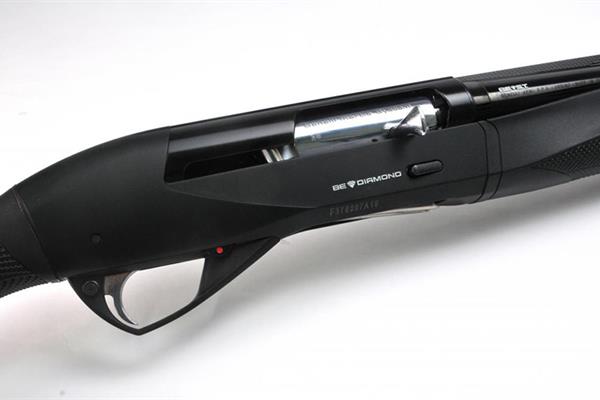
Historic manufacturer of firearms Benelli has developed a special coating to protect the barrel of firearms from corrosion, abrasion, wear and external agents.
The process – called BE S.T. (acronym of Benelli Surface Treatment) – employs a recently improved and still under development innovative hybrid technology to create a coating which characteristics are similar to the ones of a diamond: high hardness, aesthetic preciousness and corrosion resistance. It also doesn't require protective oil for maintenance purposes.
"In the frame of a society that is increasingly attentive and sensitive to ecological values, we find BE S.T. which, unlike other treatments, is a wholly ecological technology, as it does not produce waste nor harmful emissions for the environment. It is also one of the processes with the lowest environmental impact, chosen at European level for the replacement of traditional coatings: in fact, emissions and waste are basically zeroed", reads Benelli website.
The complex deposition process is carried out at the Urbino facility with a plant entirely built in Italy, according to Benelli's specifications. The plant employs high vacuum technology and uses the catalytic properties of plasma, which allow the occurrence of chemical reactions otherwise impossible at the low temperatures needed to preserve the mechanical characteristics of the barrel.
The treatment process
A part of the plant uses state-of-the-art solid-state ion sources, which allow the deposition of compact layers free of defects (potential corrosion triggers) typical of other technologies in use. Another part of the plant employs a radiofrequency plasma source, which is able to separate the gaseous precursors introduced into the chamber, in order to create the conditions for their deposition.
The BE S.T. process by Benelli employs a liquid precursor, covered by industrial secrecy, which is vaporized before entering the chamber. The liquid precursor, also called diamantoid, is the key to create an outer layer with properties similar to the ones of diamonds, as it contains chains of hydrocarbons in which the carbon forms sp3 bonds, typical of the diamond.
The coating process is 4.0 oriented.
Durability and an ultra-black finish
The deposited layer is made of a carbon and hydrogen lattice, has an amorphous microstructure, is chemically inert and very hard. In contrast, the steel substrate has a crystalline microstructure, is chemically reactive and relatively soft. Therefore, the coating applied directly on the steel has a low adhesion, due to the lack of chemical-physical affinity with the substrate: for this reason, an intermediate layer with properties that gradually change from metallic to intermetallic is needed. These properties are similar to the ones of diamonds: high hardness, toughness and heat, wear and corrosion resistance.
"In addition to the deposition phase, the process also includes the pre- and post-treatment phases. The production process is very complex: it required years of research and development. Its difficulty is what stopped many from pursuing this path", states Benelli. "Benelli is the first company in the world to succeed in applying it to guns".
"After the deposition treatment, a series of operations is necessary to give the coating its final aesthetic appearance, which makes it bright, elegant, pleasing to the eye and to the touch – much like a precious diamond jewel. Its colour, measurable by means of a spectrophotometer, is a deep black, so bottomless and intense that, compared to it, a burnished barrel looks grey", writes the company.
Tested in extreme environments
The validation of the process was performed through a series of field tests in the most extreme environments worldwide, where salinity and humidity loads generate a highly corrosive action - environments commonly found during hunting.
"Tests lasted 3 years, with incredible results: at the end the barrels were still as new. The evaluation of the hunters involved was excellent, both from an aesthetic and functional point of view. Ultimately, the whole process is the result of a know-how acquired while overcoming the several challenges that the implementation of this cutting-edge technology at an industrial level entail. This is what makes it unique and difficult to imitate", writes the company.